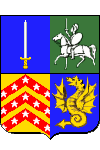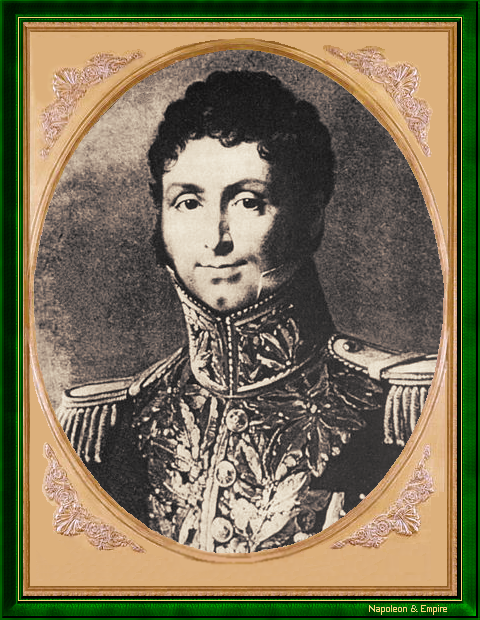Pierre Wattier (ou Wathier)
Comte de Saint-Alphonse
Pronunciation:

Pierre Wattier (sometimes spelled Wathiez) was born on September 4, 1770, in Laon, in the province of Île-de-France (now in the department of Aisne). He was the son of Jean-Pierre Wattier and Marie-Anne de Vismes.
His military career began in 1792 as a second lieutenant in a squadron of mounted chasseurs. He rose rapidly through the ranks, ending 1793 as a squadron leader.
He became a brigade commander (colonel) of the 4th Dragoon Regiment in 1800 and distinguished himself at the battle of Nuremberg on December 18 of that year.
In August 1804, while retaining command of his regiment, he was appointed equerry to Emperor Napoleon I. In this capacity, he was responsible for the horses regularly used by the sovereign.
During the preparations for the campaign in Germany, his regiment was incorporated into General Frederick Henry Walther's 2nd Dragoon Division (August 1805). During the hostilities, he captured the bridge over the Lech River near Wertingen (October 8) before being taken prisoner at the battle of Dürrenstein on November 11. News of his death having circulated after the battle, the announcement of his survival was one of the first items of information published in the 24th bulletin of the Grande Armée, demonstrating the Emperor's high regard for Wathier. He reaffirmed this esteem on December 24 by appointing him brigadier general shortly after his release as part of an exchange.
After commanding the dragoon depots of Versailles and Saint-Germain in 1806, he took command in July of the 2nd Light Cavalry Brigade belonging to the 1st Corps of the Grande Armée. He led the Prussian campaign, participating in the battles of Saalburg (October 8), Schleiz (October 9), and Criwitz (November 3). His charge at the battle of Schleiz earned him a second commendation in a bulletin. In December 1806, he briefly commanded the newly formed 3rd Light Cavalry Brigade before returning to command the 2nd Brigade in Antoine Charles Lasalle's division, with which he fought at Friedland.
He then commanded light cavalry and hussar brigades under Marshal Louis-Nicolas Davout and General Emmanuel de Grouchy before following Marshal Bon-Adrien Jeannot de Moncey to Spain in 1808. On October 25, he won the Battle of Lérins and was made a Count of the Empire fifteen days later. He then took part in the battles of Tudela (November 23), Bubierca (November 29), and the siege of Zaragoza in December, where he commanded the cavalry of the 3rd Corps.
In 1809, he captured the town of Alcaniz (January 26) and then played a leading role at the battle of Belchite (June 18). Temporarily called to the Army of Germany for the last months of the year, he became Count of Saint-Alphonse in November but returned to Spain in 1810.
On July 31, 1811, he was promoted to Major General.
In 1812, he left Spain and participated in the French invasion of Russia. Under the command of General Auguste Jean-Gabriel de Caulaincourt, he was among those whose charge captured the great redoubt at the battle of Borodino (Moskova).
The following year, he commanded the 2nd Cuirassier Division in the Army of Germany, then the cavalry of Davout's 13th Corps in Hamburg.
Upon his return to France in May 1814, he was both placed on inactive duty and made a Knight of Saint Louis by the new regime.
During the Hundred Days, he commanded the 3rd Cavalry Division of the 2nd Corps, then, in the Army of Belgium, the 13th Cavalry Division (cuirassiers) of Jean-Baptiste Milhaud's corps, at the head of which he fought at Waterloo.
Wathiez was again placed on inactive duty in August 1815, then resumed his career until 1836, holding several positions as Inspector General of the Cavalry and the Gendarmerie.
Pierre Wattier died on February 3, 1846, of a stroke in his castle of Vimer, in the commune of Guerquesalles (and not in Paris as is often stated in his biographies).
"Pierre Wattiez, Count of Saint-Alphonse." 19th-century engraving.

The name of Pierre Wattiez is inscribed on the Arc de Triomphe (east pillar, 12th column).